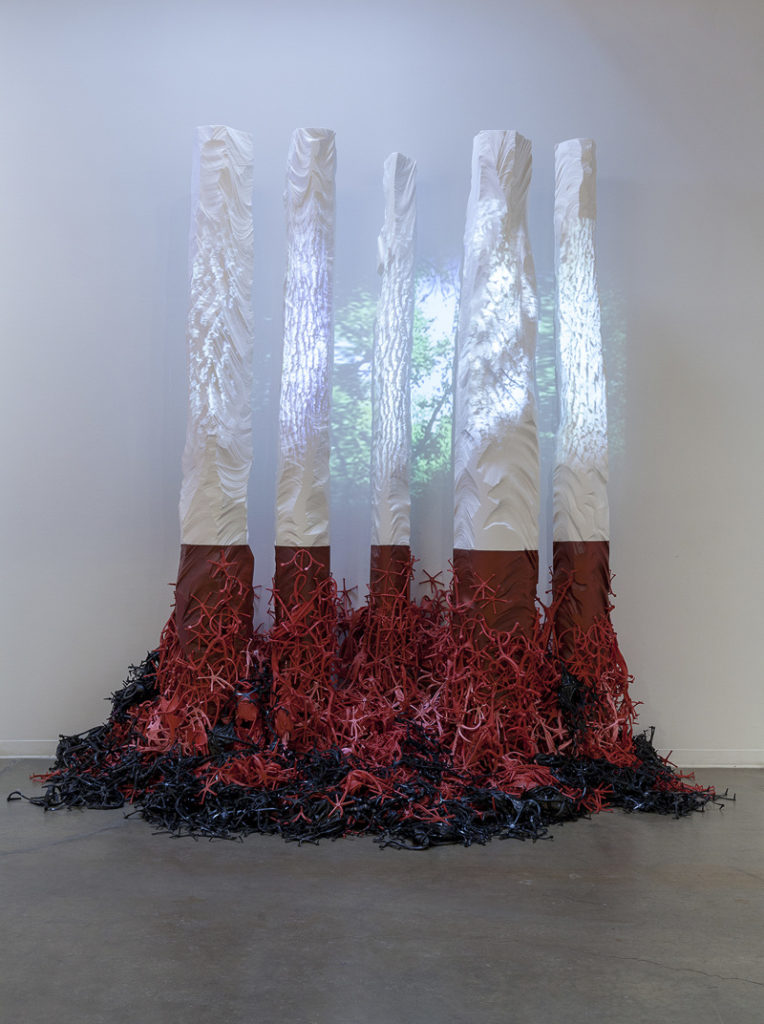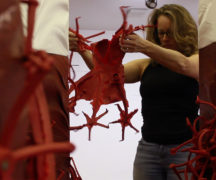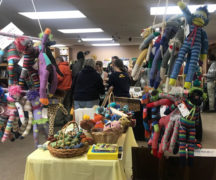By DAVID DUPONT
BG Independent News
Katie Caron came of age just as concerns about the environment were being pushed to the forefront.
Born in 1978, eight years after Earth Day, the artist said she always had a concern for the environment.
People, she said in a recent telephone interview, were taking for granted how food a grown, packaged and shipped. Even as a child she was always trying to figure out what was hidden.
Caron has made those environmental concerns the focus of her artwork.
“My work has always been grounded in organic abstraction and nature.”

Her piece The Middle Landscape will be constructed in the Willard Wankleman Gallery as the featured artwork at ArtsX: Experiment Saturday, Dec. 3 from 5-9 p.m.
The one-night arts extravaganza combines a bazaar and arts festival with performances, exhibits and sales by student artists in all media – visual arts in all their forms, creative writing, music, dance and more. These bursts of creativity will occur in all the nooks and crannies of the Wolfe Center and the Fine Arts Building.
Click to view complete schedule of activities.
Caron’s The Middle Landscape is made up of recycled materials including Styrofoam forms, used to make concrete, and waste rubber.
The piece was inspired by an industrial accident in Hungary where a pond holding waste was breached and the heavy metals-ladened liquid flooded a forest.
Against her vision of this catastrophe, she projects images of an idealized forest onto the Styrofoam.
The Middle Landscape, Caron said, evokes “the underbelly of what we do as consumers, and all the waste associated with all these things.”
She will also display her Cross Sections lightboxes, which are constructed using medical waste.
Caron said she started using industrial cast-offs when she went Cranbrook Academy of Art to study ceramics. The faculty encouraged students to branch out and explore materials other than those normally associated with their medium. “They don’t want you to be just an expert in that one material,” she said, “It was more about the concepts. … The concepts I was interested in were always organic imagery and forms in nature and science.”
Using the waste from industry followed from this. “By using the materials, I’m trying to show how we are numb to them,” Caron said.
She received her Master of Fine Arts from Cranbrook in 2009. Since 2015, she’s taught ceramics at Arapahoe Community College in Littleton, Colorado.
She still works in ceramics. In 2011 she was asked to contribute work to Overthrown: Clay Without Limits at the Denver Art Museum.
Her most recent work involves using fiberglass to depict neuron structures. The forms for the piece were made of clay, she said. “Clay was used more as a tool for the fabrication of the pieces.”
Caron said she may move back toward ceramics with her next body of work. “But I’m not sure,” she said.





